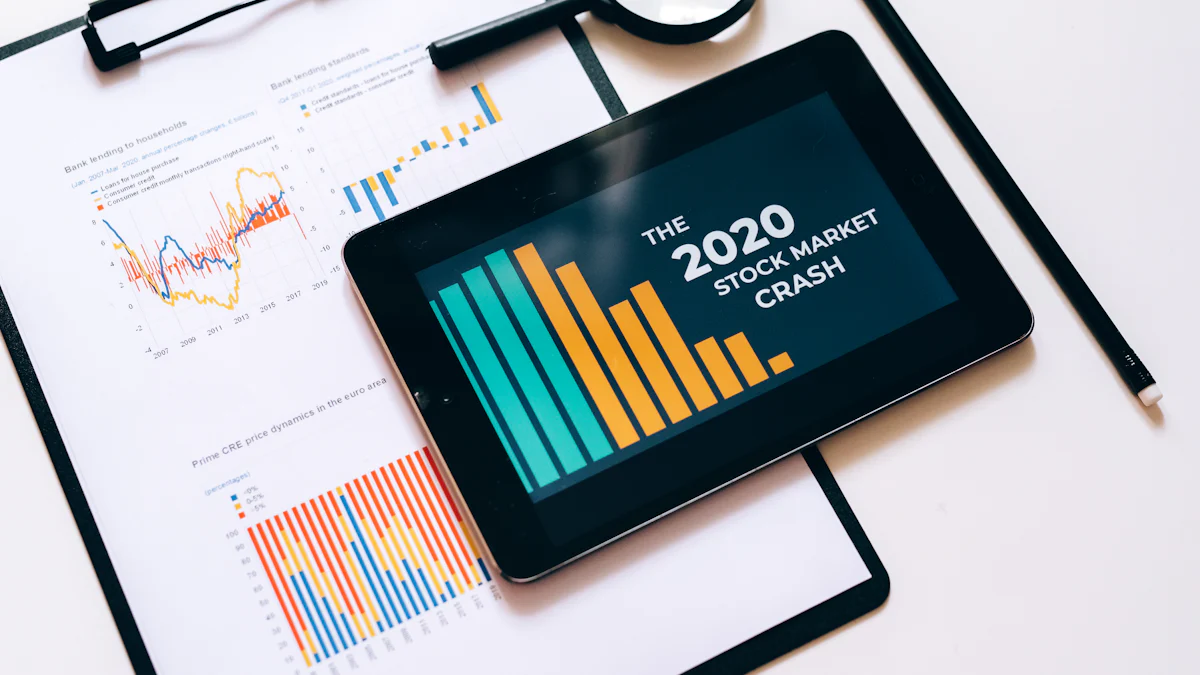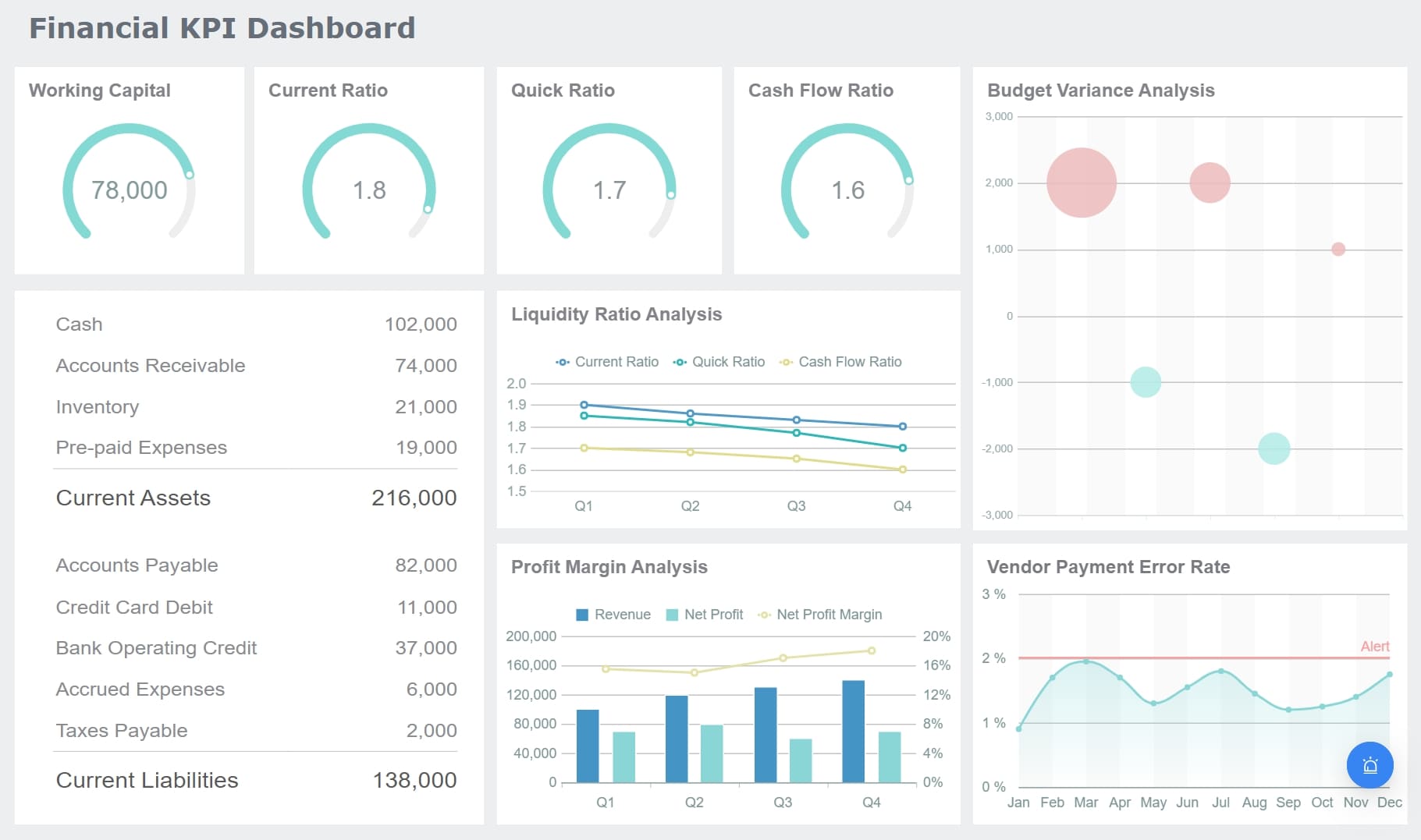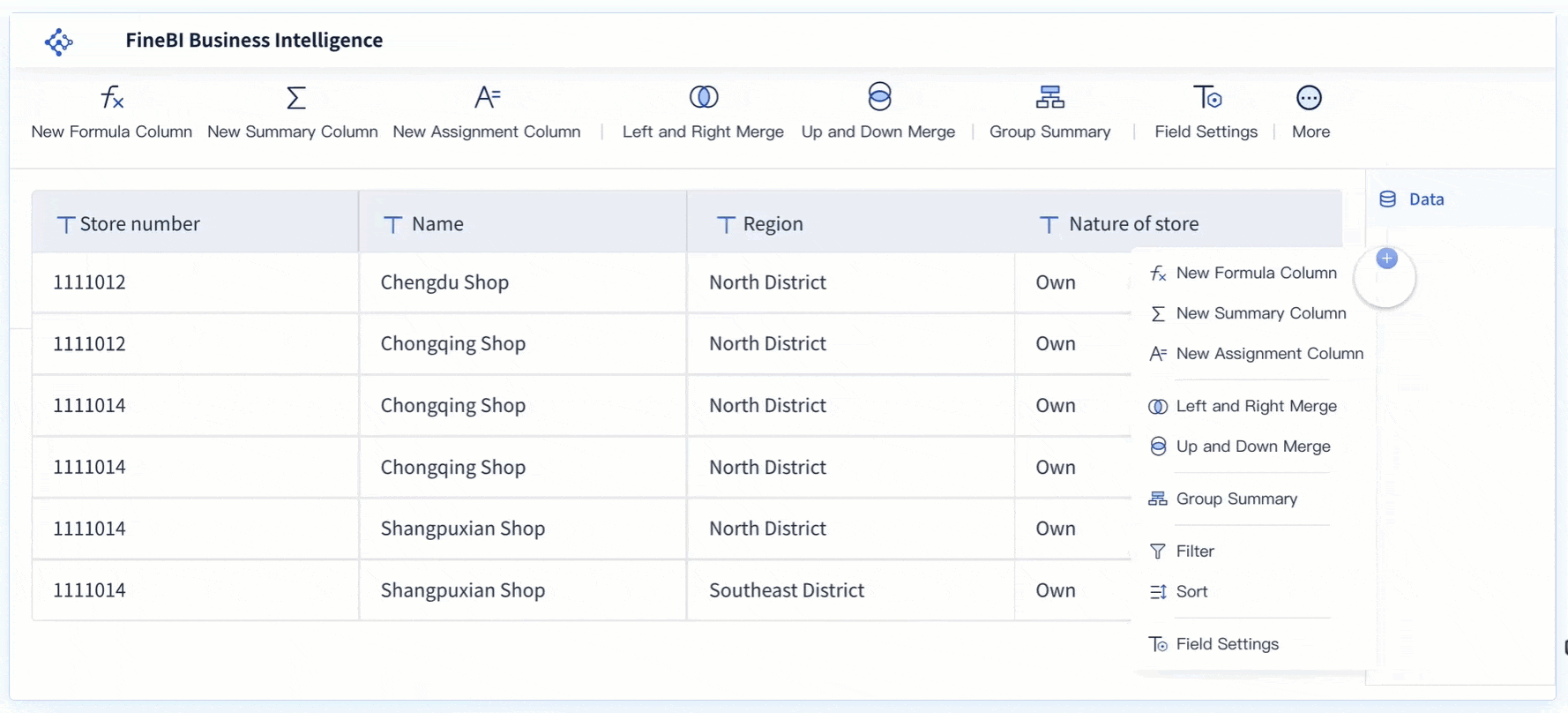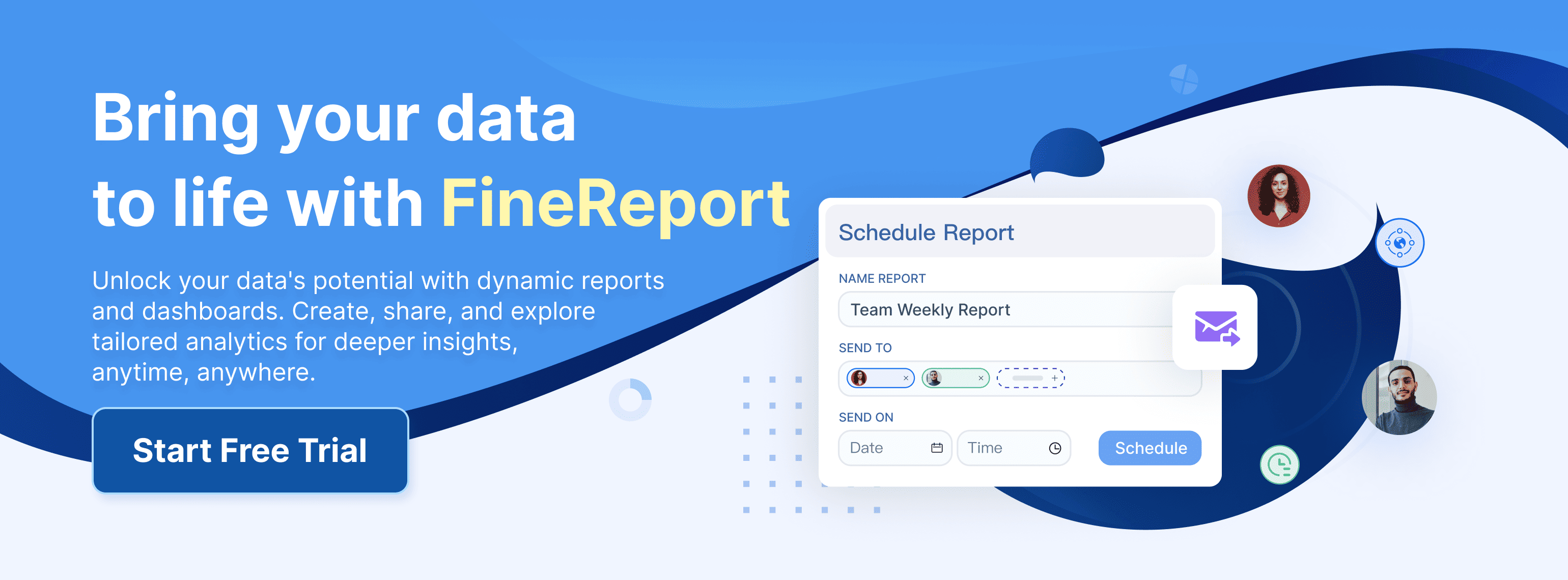

Behavioral data offers insights into how individuals interact with products and services. It captures actions like clicks, purchases, and page views, providing a detailed picture of user behavior. Understanding this data is crucial for businesses aiming to enhance customer experiences and make informed decisions. Tools like FineDataLink, FineReport, and FineBI play a significant role in analyzing and visualizing behavioral data, enabling organizations to leverage these insights effectively. By utilizing these tools, companies can tailor their strategies to meet customer needs more precisely.
Defining Behavioral Data
What is Behavioral Data?
Behavioral data refers to the information generated by individuals as they interact with products, services, or systems. This data captures actions such as clicks, purchases, and page views, offering a comprehensive view of user behavior. Businesses use this data to understand customer preferences and improve their offerings.
Characteristics of Behavioral Data
Behavioral data possesses several key characteristics:
- Granularity: It provides detailed insights into specific user actions.
- Contextuality: The data is rich in context, revealing the circumstances surrounding each interaction.
- Predictive Nature: By analyzing patterns, businesses can predict future behaviors and trends.
Sources of Behavioral Data
Various sources contribute to the collection of behavioral data:
- Websites: User interactions on websites, such as page visits and clicks, generate valuable data.
- Mobile Apps: Actions within apps, like button presses and screen swipes, provide insights into user preferences.
- Social Media: Engagements on platforms, including likes and shares, offer a glimpse into user interests.
- E-commerce Platforms: Purchase history and browsing behavior reveal consumer buying patterns.
How Behavioral Data is Collected
Collecting behavioral data involves various methods and considerations to ensure accuracy and ethical compliance.
Data Collection Methods
Businesses employ several methods to gather behavioral data:
- Tracking Cookies: These small files track user activity on websites, providing insights into browsing habits.
- Event Tracking: This method records specific user actions, such as button clicks or form submissions.
- Surveys and Feedback: Direct feedback from users offers qualitative insights into their experiences.
- Log Files: Servers automatically generate logs that capture user interactions with digital platforms.
Ethical Considerations
Ethical considerations play a crucial role in the collection and use of behavioral data:
- User Consent: Businesses must obtain explicit consent from users before collecting their data.
- Data Privacy: Protecting user privacy is paramount, requiring secure storage and handling of data.
- Transparency: Companies should clearly communicate how they collect, use, and store behavioral data.
- Compliance: Adhering to regulations like GDPR ensures that data collection practices meet legal standards.
Understanding and defining behavioral data allows businesses to harness its potential effectively. By collecting and analyzing this data responsibly, organizations can enhance customer experiences and drive informed decision-making.
The Scope of Behavioral Data
Behavioral data extends its influence across various industries and research fields. By understanding how individuals interact with products and services, businesses and researchers can make informed decisions and enhance their strategies.
Applications in Various Industries
E-commerce
In the e-commerce industry, behavioral data plays a pivotal role. Companies analyze customer interactions on their websites to understand buying patterns and preferences. This data helps businesses tailor their marketing strategies and improve user experiences. For instance, by tracking page views and clicks, e-commerce platforms can recommend products that align with a customer's interests. This personalized approach increases the likelihood of purchases and boosts customer satisfaction.
Healthcare
Healthcare providers utilize behavioral data to enhance patient care and operational efficiency. By examining patient interactions with healthcare systems, providers can identify trends and patterns that inform treatment plans. For example, data on appointment scheduling and medication adherence helps healthcare professionals optimize their services. Additionally, behavioral data aids in predicting patient needs, allowing for proactive interventions and improved health outcomes.
Behavioral Data in Research
Academic Studies
Researchers in academia leverage behavioral data to gain insights into human behavior and societal trends. This data provides a rich source of information for studies in psychology, sociology, and other fields. By analyzing patterns in online interactions or consumer behavior, researchers can draw conclusions about social dynamics and individual preferences. Behavioral data thus serves as a valuable tool for advancing knowledge and understanding in various academic disciplines.
Market Research
Market researchers rely on behavioral data to understand consumer preferences and market trends. By observing how individuals interact with products and services, researchers can identify emerging trends and shifts in consumer behavior. This information helps businesses develop products that meet market demands and tailor their marketing strategies accordingly. Behavioral data provides a competitive edge by offering insights into what drives consumer decisions and how to effectively engage target audiences.
Importance of Behavioral Data
Behavioral data holds immense value for businesses and researchers. By analyzing this data, organizations can gain insights that drive strategic decisions and enhance customer experiences.
Benefits of Analyzing Behavioral Data
Improved Decision Making
Organizations rely on behavioral data to make informed decisions. This data provides a clear picture of how users interact with products and services. By understanding these interactions, businesses can identify trends and patterns. This knowledge helps in predicting future behaviors and making strategic choices. For instance, a company might notice a spike in interest for a particular product feature. They can then allocate resources to enhance that feature, ensuring it meets customer expectations.
Enhanced Customer Experience
Behavioral data plays a crucial role in improving customer experiences. By analyzing user interactions, businesses can tailor their offerings to meet individual needs. Personalized recommendations, for example, increase customer satisfaction and loyalty. When a company understands what a customer likes, it can suggest products or services that align with those preferences. This personalized approach not only enhances the shopping experience but also boosts sales and customer retention.
Behavioral Data vs. Other Data Types
Behavioral data differs from other data types, such as demographic and transactional data. Each type offers unique insights, but behavioral data provides a more dynamic view of user interactions.
Comparison with Demographic Data
Demographic data includes information like age, gender, and location. While useful, it offers a static view of the customer. Behavioral data, on the other hand, captures real-time actions and preferences. This dynamic nature allows businesses to adapt quickly to changing customer behaviors. For example, knowing a customer's age might help in segmenting the market, but understanding their browsing habits provides actionable insights for personalized marketing.
Comparison with Transactional Data
Transactional data records purchases and financial interactions. It shows what a customer bought and when. However, it lacks context about the decision-making process. Behavioral data fills this gap by revealing the journey leading to a purchase. It highlights the pages visited, the time spent on each, and the actions taken before buying. This comprehensive view helps businesses optimize their sales funnels and improve conversion rates.
Types of Behavioral Data

Behavioral data encompasses various types, each offering unique insights into user interactions. Understanding these types helps businesses tailor their strategies effectively.
Online Behavioral Data
Online behavioral data captures user interactions in digital environments. It provides a wealth of information about how individuals engage with online platforms.
Clickstream Data
Clickstream data tracks the sequence of clicks made by users as they navigate websites. This data reveals the paths users take, the pages they visit, and the time spent on each page. Businesses analyze clickstream data to understand user preferences and optimize website design. By identifying popular pages and navigation patterns, companies can enhance user experience and increase engagement.
Social Media Interactions
Social media interactions offer insights into user engagement on platforms like Facebook, Twitter, and Instagram. This data includes likes, shares, comments, and mentions. Businesses use social media interactions to gauge brand sentiment and identify trends. By analyzing this data, companies can tailor their marketing strategies to resonate with their audience. Social media interactions also help in understanding customer feedback and improving products or services.
Offline Behavioral Data
Offline behavioral data captures user interactions in physical environments. It provides valuable insights into how individuals engage with products and services in real-world settings.
In-store Behavior
In-store behavior data tracks customer actions within physical retail spaces. This data includes information on foot traffic, product interactions, and purchase decisions. Retailers use in-store behavior data to optimize store layouts and improve customer experiences. By understanding how customers navigate stores, businesses can strategically place products to increase sales and enhance satisfaction.
Customer Service Interactions
Customer service interactions provide insights into how individuals engage with support teams. This data includes call logs, chat transcripts, and email exchanges. Companies analyze customer service interactions to identify common issues and improve service quality. By understanding customer concerns, businesses can train staff more effectively and enhance overall customer satisfaction.
Tools for Analyzing Behavioral Data

Analyzing behavioral data requires robust tools that can handle large datasets and provide meaningful insights. These tools help businesses understand user interactions and make informed decisions. Two main categories of tools are data analytics platforms and machine learning tools.
Data Analytics Platforms
Data analytics platforms play a crucial role in processing and interpreting behavioral data. They offer features that simplify data integration and analysis.
FineDataLink and its Role in Data Integration
FineDataLink serves as an enterprise-level data integration platform. It simplifies complex data integration tasks with its low-code approach. Businesses use FineDataLink to synchronize data in real-time and develop advanced ETL and ELT processes. The platform supports over 100 common data sources, ensuring seamless connectivity. Its drag-and-drop interface makes it user-friendly, allowing organizations to streamline their data workflows efficiently. FineDataLink enhances data management by building both offline and real-time data warehouses.
Google Analytics
Google Analytics provides insights into website traffic and user behavior. It tracks metrics such as page views, bounce rates, and session durations. Businesses use Google Analytics to understand how users interact with their websites. This tool helps in identifying popular content and optimizing user experience. By analyzing data from Google Analytics, companies can tailor their marketing strategies to meet customer needs more effectively.
Machine Learning Tools
Machine learning tools offer advanced capabilities for analyzing behavioral data. They enable businesses to predict trends and automate decision-making processes.
TensorFlow
TensorFlow is an open-source machine learning framework. It allows developers to build and train machine learning models. Businesses use TensorFlow to analyze large datasets and identify patterns in user behavior. This tool supports various applications, including image recognition and natural language processing. TensorFlow's flexibility and scalability make it suitable for handling complex behavioral data analysis tasks.
Scikit-learn
Scikit-learn is a machine learning library for Python. It provides simple and efficient tools for data mining and data analysis. Businesses use Scikit-learn to implement machine learning algorithms for predictive modeling. This tool helps in classifying and clustering behavioral data, offering insights into user segments. Scikit-learn's ease of use and comprehensive documentation make it a popular choice for data scientists and analysts.
Challenges in Using Behavioral Data
Behavioral data offers valuable insights, but it also presents challenges. Organizations must address these challenges to use the data effectively and responsibly.
Data Privacy Concerns
Data privacy remains a significant concern when handling behavioral data. Organizations must ensure that they protect user information and comply with regulations.
GDPR Compliance
The General Data Protection Regulation (GDPR) sets strict guidelines for data protection. Companies must adhere to these rules when collecting and processing behavioral data. GDPR requires organizations to implement measures that safeguard personal data. They must also provide transparency about how they use this data. Non-compliance can result in hefty fines and damage to a company's reputation.
User Consent
Obtaining user consent is crucial for ethical data collection. Companies must inform users about the data they collect and how they will use it. Users should have the option to opt-in or opt-out of data collection. Clear communication builds trust and ensures that users feel comfortable sharing their information. Without consent, organizations risk violating privacy laws and losing customer trust.
Data Quality Issues
High-quality data is essential for accurate analysis. However, behavioral data often faces quality issues that can affect its reliability.
Incomplete Data
Incomplete data poses a challenge for analysts. Missing information can lead to inaccurate conclusions and flawed insights. Organizations must implement strategies to minimize data gaps. They can use data validation techniques to ensure completeness. Regular audits of data collection processes can also help identify and address gaps.
Data Inconsistencies
Data inconsistencies occur when there are discrepancies in the data collected. These inconsistencies can result from errors in data entry or differences in data formats. Consistent data is vital for meaningful analysis. Organizations should standardize data collection methods to reduce inconsistencies. They can also use data cleaning tools to correct errors and ensure uniformity.
Addressing these challenges is crucial for leveraging behavioral data effectively. By prioritizing data privacy and quality, organizations can gain valuable insights while maintaining user trust and compliance.
Use Cases of Behavioral Data
Behavioral data provides valuable insights that businesses can leverage to enhance their strategies. By understanding user interactions, companies can tailor their offerings to meet customer needs more effectively. This section explores how behavioral data is used in marketing and product development.
Personalization in Marketing
Personalization in marketing involves tailoring messages and offers to individual customers. Behavioral data plays a crucial role in achieving this level of customization.
Targeted Advertising
Businesses use behavioral data to create targeted advertising campaigns. By analyzing user interactions, companies can identify specific interests and preferences. This information allows marketers to deliver ads that resonate with individual customers. For example, if a user frequently visits pages related to fitness, a company might show them ads for workout gear or health supplements. Targeted advertising increases the likelihood of engagement and conversion, as it aligns with the user's interests.
Product Recommendations
Product recommendations enhance the shopping experience by suggesting items that match a customer's preferences. Behavioral data provides the foundation for these recommendations. Companies analyze past purchases, browsing history, and other interactions to understand what a customer might like. For instance, an e-commerce platform might recommend similar products to those a user has previously bought. This personalized approach not only boosts sales but also improves customer satisfaction by making the shopping process more relevant and enjoyable.
Behavioral Data in Product Development
Behavioral data informs product development by offering insights into how users interact with existing products. This information helps companies refine their offerings and introduce new features that meet customer needs.
User Feedback Analysis
User feedback analysis involves examining comments, reviews, and other forms of feedback to understand customer experiences. Behavioral data complements this analysis by providing context to user opinions. For example, if several users mention difficulty with a particular feature, behavioral data can reveal how often that feature is used and in what context. This insight helps product teams prioritize improvements and address pain points effectively.
Feature Usage Tracking
Feature usage tracking monitors how users engage with different aspects of a product. Behavioral data captures detailed information about which features are popular and which are underutilized. Companies use this data to make informed decisions about product updates and enhancements. For instance, if a feature sees low engagement, the development team might investigate why and consider redesigning it. Conversely, highly used features might receive additional investment to further enhance their functionality.
By leveraging behavioral data, businesses can personalize marketing efforts and optimize product development. These use cases demonstrate the power of behavioral data in driving strategic decisions and improving customer experiences.
FanRuan's Contribution to Behavioral Data Analysis
FanRuan offers powerful tools that enhance the analysis of behavioral data. These tools, FineReport and FineBI, provide businesses with the ability to generate insights and make informed decisions.
FineReport for Enhanced Reporting
FineReport stands out as a robust reporting tool. It allows users to create customizable reports that cater to specific business needs. Users can design reports with a drag-and-drop interface, making it accessible even for those with limited technical skills. This flexibility ensures that businesses can tailor reports to highlight the most relevant data points.

Customizable Reports
FineReport enables the creation of highly customizable reports. Users can adjust layouts, incorporate various data sources, and apply different visualization styles. This customization ensures that reports meet the unique requirements of each business. By providing detailed insights, these reports help organizations understand user behavior and improve their strategies.

Real-time Data Visualization
Real-time data visualization is another key feature of FineReport. It allows businesses to view data as it updates, providing immediate insights into user interactions. This capability is crucial for making timely decisions and responding to changes in user behavior. Real-time visualization helps businesses stay agile and adapt their strategies quickly.
FineBI for Self-service Analytics
FineBI empowers users with self-service analytics capabilities. It allows business users and data analysts to explore data independently, without relying on IT departments. This autonomy enhances productivity and encourages data-driven decision-making across the organization.

FineBI offers interactive dashboards that provide a comprehensive view of behavioral data. Users can customize these dashboards to display key metrics and trends. The interactive nature of the dashboards allows users to drill down into specific data points, uncovering deeper insights. This feature helps businesses identify patterns and make informed decisions based on real-time data.

Predictive Analytics
Predictive analytics is a powerful feature of FineBI. It uses historical data to forecast future trends and behaviors. Businesses can leverage this capability to anticipate customer needs and adjust their strategies accordingly. Predictive analytics provides a competitive edge by enabling organizations to stay ahead of market trends and customer expectations.
Behavioral data holds immense significance in understanding user interactions and enhancing business strategies. It provides detailed insights into customer preferences, enabling organizations to make informed decisions. As technology advances, future trends in behavioral data analysis will likely focus on real-time processing and predictive analytics. Businesses will increasingly rely on sophisticated tools to extract actionable insights, driving personalized experiences and strategic growth. Embracing these trends will empower companies to stay competitive and meet evolving customer needs effectively.
FAQ
Behavioral data refers to the information generated by individuals as they interact with products, services, or systems. It includes actions like clicks, purchases, and page views, offering insights into user behavior.
Businesses use behavioral data to understand customer preferences and improve their offerings. This data helps in making informed decisions, enhancing customer experiences, and tailoring marketing strategies.
Companies collect behavioral data through various methods, including tracking cookies, event tracking, surveys, feedback, and log files. These methods capture user interactions on websites, apps, and other digital platforms.
Ethical considerations include obtaining user consent, ensuring data privacy, maintaining transparency, and complying with regulations like GDPR. Companies must protect user information and clearly communicate their data practices.
Demographic data provides static information like age and gender, while behavioral data captures real-time actions and preferences. Behavioral data offers a dynamic view of user interactions, allowing businesses to adapt quickly to changes.
Organizations face challenges such as data privacy concerns, ensuring GDPR compliance, obtaining user consent, and addressing data quality issues like incomplete data and inconsistencies.
FineDataLink simplifies data integration, FineReport enhances reporting with customizable reports and real-time visualization, and FineBI empowers self-service analytics with interactive dashboards and predictive analytics. These tools help businesses analyze behavioral data effectively.
Behavioral data finds applications in e-commerce for personalized marketing, in healthcare for improving patient care, and in research for understanding consumer behavior and societal trends.
Continue Reading About Behavioral Data
2025 Best Data Integration Solutions and Selection Guide
Explore top data integration solutions for 2025, enhancing data management and operational efficiency with leading platforms like Fivetran and Talend.
Howard
Dec 19, 2024
2025 Data Pipeline Examples: Learn & Master with Ease!
Unlock 2025’s Data Pipeline Examples! Discover how they automate data flow, boost quality, and deliver real-time insights for smarter business decisions.
Howard
Feb 24, 2025
Best Data Integration Platforms to Use in 2025
Explore the best data integration platforms for 2025, including cloud-based, on-premises, and hybrid solutions. Learn about key features, benefits, and top players.
Howard
Jun 20, 2024
Best Data Management Tools of 2025
Explore the best data management tools of 2025, including FineDataLink, Talend, and Snowflake. Learn about their features, pros, cons, and ideal use cases.
Howard
Aug 04, 2024
Covers Dashboard: Find Your Perfect Match
Choose the perfect covers dashboard to protect and style your car, enhancing its interior and resale value with the right material and fit.
Lewis
Nov 05, 2024
Customer Data Integration: A Comprehensive Guide
Master customer data integration to enhance business operations by combining data from multiple sources for a comprehensive customer view.
Howard
Sep 07, 2024





